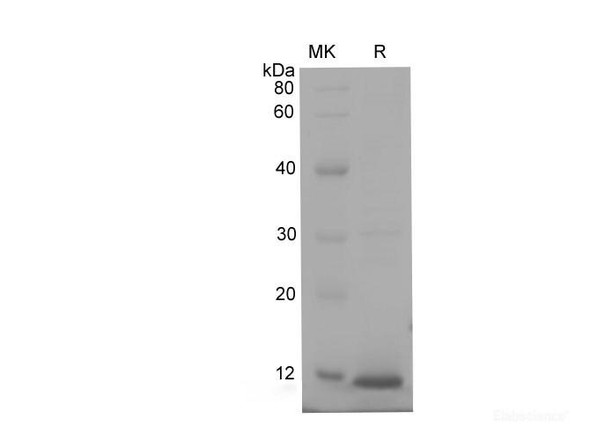| Background: | Fatty acid binding proteins (FABP) are small cytoplasmic lipid binding proteins that are expressed in a tissue specific manner and are involved in intracellular lipid transport. All FABPs bind free fatty acids, cholesterol, and retinoids, which differ in their selectivity, affinity and binding mechanism. Circulating FABP levels are used as indicators of tissue damage. Some FABP polymorphisms have been associated with disorders of lipid metabolism and the development of atherosclerosis. FABPs are structurally conserved, consisting of a water-filled, ligand-binding pocket surrounded by ten anti-parallel beta-barrel structures, capped by an N-terminal helix-turn-helix motif. The helical N-terminus is involved in the regulation of FA transfer from membranes. FABP5, also known as epidermal fatty acid binding protein (E-FABP), is highly expressed in epidermal cells, but also in a plethora of other tissues, including mammary gland, brain, liver, kidney, lung, adipocytes, macrophages, tongue and testis. It is associated with keratinocytes and adipocytes and is suggested to promote fatty acid availability to enzymes, protect cell structures from fatty acid attack, and target fatty acids to nuclear transcription factors. The amino acid sequence of human FABP5 is 80%, 81% and 92% identical to that of mouse, rat and bovine FABP5, respectively. |






